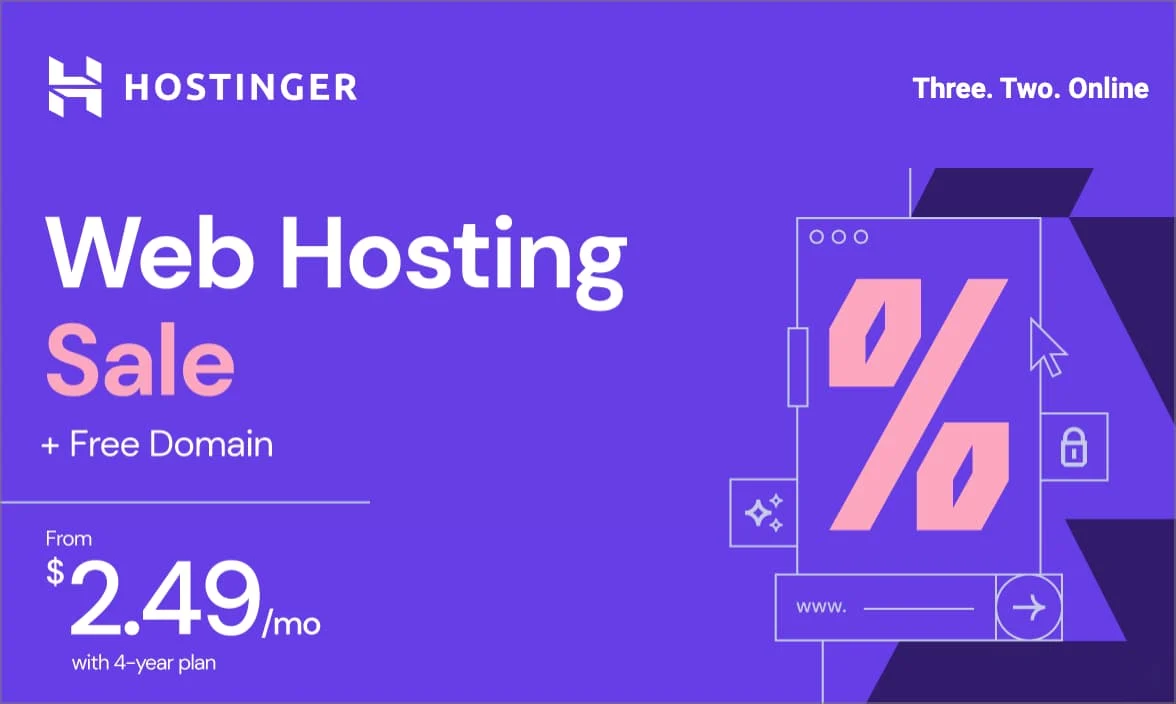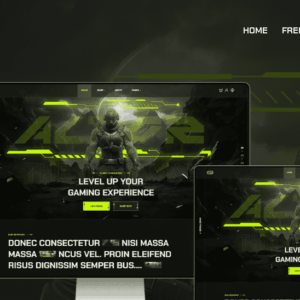
How Much Should You Charge for Web Design? Find Jobs & Build Your Portfolio
Much Should You Charge for Web Design
Freelancing in the world of web design is exhilarating. You’re your own boss, setting your schedule, and choosing projects that ignite your creativity. But it comes with a critical question: how much to charge for web design? Set your freelance web design rates too high, and clients might vanish. Price yourself too low, and you risk undervaluing your expertise and burning out.
The Importance of Web Design Pricing: A Win-Win for Everyone

Understanding web design pricing isn’t just about the freelancer’s paycheck. It’s about building trust and transparency with clients. For freelancers, it means financial stability, attracting the right projects, and building a sustainable web design career. For clients, it means realistic expectations, avoiding budget surprises, and getting the best value for their investment.
Table of Contents
Understanding Web Design Pricing Models:
Web Design Pricing: The Hourly Rate Model
In the dynamic world of freelance web design, determining how much to charge for your services is a crucial step. One popular approach is the hourly rate model, favored for its flexibility and suitability for smaller projects. Let’s delve deeper:
Pros of Hourly Rates:
- Flexibility: Hourly rates offer adaptability for both you and your clients. You can adjust your rate based on project complexity or client budget, while clients can easily scale the project scope up or down.
- Smaller Projects: Hourly billing is ideal for projects with a limited or undefined scope, such as website updates, small business websites, or landing pages.
Cons of Hourly Rates:
- Estimation Challenges: Accurately estimating the time required for a web design project can be tricky, leading to potential disagreements with clients.
- Client Concerns: Clients may worry about costs spiraling out of control if they perceive a project taking longer than expected.
Freelance Web Design Rates by Experience Level
The hourly rate you charge as a freelance web designer heavily depends on your experience and expertise. Here’s a general guideline to help you navigate the web design career landscape:
- Junior Web Designers: Typically charge $20-$40 per hour, often working on smaller projects or under the guidance of more experienced designers.
- Mid-Level Web Designers: Command $40-$80 per hour, possessing a solid portfolio of successful projects and the ability to handle more complex designs.
- Senior Web Designers: Earn $80-$150+ per hour, boasting extensive experience, a stellar web design portfolio, and a proven track record of delivering high-quality websites.
Factors Influencing Freelance Web Design Rates
Beyond experience level, several other factors impact your earning potential as a freelance web designer:
- Location: Rates tend to be higher in major metropolitan areas due to increased living costs and demand.
- Skillset: Specialized skills like e-commerce development, UX/UI design, or specific CMS expertise can justify higher rates.
- Project Scope: Larger, more complex projects generally warrant higher hourly rates or a fixed project fee.
- Client Budget: Be prepared to negotiate rates based on your client’s budget and the project’s value proposition.

Navigating the World of Web Design Jobs
To successfully navigate the competitive landscape of web design jobs, consider these tips:
- Build a Strong Portfolio: Showcase your best work in a well-organized web design portfolio that highlights your skills and experience.
- Network: Attend industry events, join online communities, and connect with other professionals to build relationships and find potential clients.
- Market Your Services: Create a professional website, optimize your online presence, and actively seek out freelance web design opportunities.
Project-Based Pricing for Web Design: A Deep Dive
Project-based pricing (PBP) is a common model used by freelance web designers where a fixed fee is agreed upon for an entire web design project. This fee encompasses all aspects of the project, from initial consultation and design to development, testing, and launch.
Pros:
- Clear Expectations: Both the client and designer have a clear understanding of the project scope, deliverables, and cost upfront. This minimizes surprises and misunderstandings down the line.
- Easier Budgeting for Clients: Clients can easily allocate a specific budget for their website, knowing the total cost in advance. This is especially helpful for businesses with strict financial planning.
- Streamlined Workflow: The fixed fee structure can motivate designers to work efficiently, complete tasks promptly, and deliver within the agreed-upon timeline.
- Potentially Higher Profit Margins: If managed well, PBP can lead to higher profit margins for designers compared to hourly billing, especially for projects where you can leverage your expertise and experience to complete tasks quickly.
Cons:
- Scope Creep Risk: As projects progress, clients may request changes or additions beyond the initial scope. Managing scope creep can be challenging and may lead to additional work without additional compensation.
- Less Flexibility: PBP can be less flexible compared to hourly billing, where adjustments can be made more easily if the project scope changes unexpectedly.
- Accurate Estimation is Key: If the project scope isn’t well-defined initially, it can be difficult to estimate the total cost accurately. Underestimating can lead to financial losses for the designer.

Factors Influencing Project-Based Pricing for Web Design:
Several factors determine how much you should charge for a web design project:
- Project Scope: The complexity, number of pages, features (e.g., e-commerce functionality, custom animations), and content requirements significantly impact the cost.
- Your Experience and Expertise: Your web design portfolio, skills, and reputation as a freelance web designer justify higher rates.
- Client Budget: Understanding the client’s budget helps tailor your proposal and find a mutually agreeable price point.
- Timeline: Tight deadlines may require additional resources or overtime, which can increase the project cost.
- Value-Added Services: If you offer additional services like SEO optimization, content creation, or ongoing maintenance, these should be factored into the price.
- Market Rates: Researching freelance web design rates in your region and niche will give you a benchmark for pricing your services.
Value-Based Pricing for Web Designers: Your Path to Profitability
Value-based pricing is a powerful strategy where your freelance web design rates are determined by the value you deliver to the client, rather than just the time and materials you invest. This approach recognizes that a well-designed website isn’t just a collection of code and images—it’s a business asset that can drive traffic, generate leads, and boost sales.
The Pros: Why Value-Based Pricing is Worth Considering
- Rewards Expertise: As a skilled freelance web designer, you bring a unique blend of technical know-how, creative vision, and problem-solving abilities to the table. Value-based pricing allows you to charge premium freelance web design rates that reflect your expertise and experience.
- Potential for Higher Earnings: By focusing on the results you achieve for clients (increased traffic, improved conversion rates), you can command higher fees than if you simply charged an hourly rate. This can lead to a more sustainable and profitable web design career.
- Attracts High-Value Clients: When you present yourself as a value-driven professional, you’re more likely to attract clients who understand the importance of investing in quality web design. These clients are often more willing to pay for premium services and are a pleasure to work with.
- Builds Stronger Relationships: Value-based pricing shifts the focus from cost to collaboration. When you and the client are aligned on the value proposition, you’re more likely to build a trusting, long-term relationship.
The Cons: Challenges to Overcome
- Requires Strong Communication Skills: You need to be able to clearly articulate the value you bring to the table and convince clients that your web design portfolio and track record justify your freelance web design rates. This involves active listening, effective questioning, and persuasive storytelling.
- Convincing Clients of the Value: Some clients may be accustomed to traditional pricing models or may try to negotiate lower rates. It’s essential to educate them about the benefits of value-based pricing and demonstrate how your services can deliver a significant return on investment.
- Pricing Can Be Subjective: Determining the “right” price for a web design project can be challenging. It requires careful consideration of the client’s specific needs, goals, and budget, as well as market research and your own experience.
How to Implement Value-Based Pricing
- Research: Understand your target market and what clients are willing to pay for web design jobs.
- Portfolio: Showcase your best work in your web design portfolio and emphasize the results you achieved for past clients.
- Communication: Clearly articulate the value you bring to the table during client consultations and proposals.
- Pricing Structure: Develop a transparent and flexible pricing structure that reflects the value you deliver.
- Track Results: Monitor the impact of your web design work on client goals and use this data to further demonstrate your value.

Retainer Pricing for Web Designers: A Deep Dive
When you’re a freelance web designer or running a web design agency, choosing the right pricing model is crucial. Retainer pricing is a popular option, but it’s important to understand its nuances to see if it’s the right fit for your web design career and portfolio.
What is Retainer Pricing?
Retainer pricing involves charging clients a fixed monthly fee in exchange for a set amount of web design services. This could include website maintenance, updates, design tweaks, or even ongoing marketing support.
Pros of Retainer Pricing:
- Steady Income: Predictable revenue is a huge benefit for freelancers. Retainer pricing provides a reliable cash flow, making it easier to budget and plan for the future.
- Ongoing Client Relationships: Retainers foster deeper connections with clients. You become their go-to web designer, building trust and opening doors for future projects or referrals.
- Priority Service: Retainer clients often receive priority over one-off web design jobs, ensuring faster turnaround times and a higher level of attention.
- Value-Based Pricing: You can structure retainers to focus on the value you provide, not just the hours worked. This can lead to higher freelance web design rates.
Cons of Retainer Pricing:
- Less Project Variety: If you thrive on diverse projects, retainers might feel limiting. The ongoing work can become repetitive compared to the variety of web design jobs you might get with project-based pricing.
- Commitment Required: Retainers mean dedicating time and resources to specific clients. Be sure you can handle the workload before offering retainers.
- Scope Creep: Clearly define the services included in the retainer. Otherwise, clients might request extra work that’s not covered by the agreement.
Is Retainer Pricing Right for You?
Retainer pricing is ideal if you:
- Enjoy long-term client relationships
- Want predictable income
- Specialize in ongoing website maintenance and support
- Are confident in your ability to deliver consistent value
Consider project-based pricing if you:
- Prefer diverse web design projects
- Want to maximize your freelance web design rates on individual jobs
- Have limited availability
Finding Your Competitive Edge in Freelance Web Design
Researching Web Design Freelance Rates in Your Market
Understanding the financial landscape of web design in your area is crucial. Here’s how to approach it:
- Local Surveys and Job Boards: Start by looking at freelance platforms (like Upwork or Fiverr) and local job boards to see what other web designers are charging. Pay attention to their experience level and the type of projects they offer.
- Networking: Talk to other web designers in your area (online forums, social media groups) to get an informal feel for rates.
- Consider Your Expenses: Calculate your own business costs (software subscriptions, marketing, etc.) and desired income to determine a minimum hourly or project rate.
Niche Specialization: Your Path to Higher Prices
General web design is competitive. Specializing in a niche can make you more valuable:
- Industry Focus: Become an expert in designing websites for a specific type of business (e.g., healthcare, real estate, restaurants). You’ll understand their unique needs and can charge a premium.
- Service Focus: Offer specialized services like e-commerce website design, website accessibility, or high-end custom designs.
Building Your Web Design Portfolio: Your Showcase of Skills
Your portfolio is your most powerful marketing tool. Here’s how to make it shine:
- Quality Over Quantity: Include your best work, not every project.
- Client Projects: Showcase live websites you’ve designed for real clients.
- Case Studies: Describe the challenges and solutions for each project, highlighting your problem-solving skills.
- Personal Projects: If you’re just starting, create mock-up websites for hypothetical clients to demonstrate your abilities.
Networking and Marketing Strategies for Freelance Web Designers
Getting clients is an ongoing process:
- Online Presence:
- Website: Have a well-designed website that showcases your work and services.
- Social Media: Share your expertise, engage with potential clients, and build a following on relevant platforms (LinkedIn, Instagram, etc.).
- Content Marketing:
- Blog: Write informative articles about web design to attract potential clients.
- Portfolio: Share case studies or before-and-after examples.
- Networking:
- Attend Industry Events: Conferences, meetups, or online webinars are great for making connections.
- Referral Program: Encourage past clients to refer you to their network.
- Paid Advertising: Consider targeted online advertising to reach a wider audience.
Landing Web Design Jobs: A Comprehensive Guide
The world of web design is constantly evolving, offering numerous opportunities for talented designers to build thriving careers. Whether you’re a seasoned professional or just starting out, securing web design jobs requires a multifaceted approach. Here’s a roadmap to help you navigate the landscape:
1. Where to Find Web Design Jobs
- Online Platforms:
- Freelance Marketplaces: Upwork, Fiverr, Guru, and Freelancer are bustling hubs for web design projects, offering a wide variety of clients and budgets.
- Specialized Platforms: 99designs, Dribbble, and Behance cater to creatives, allowing you to showcase your portfolio and connect with potential clients.
- Job Boards:
- General Job Boards: Indeed, LinkedIn, and Glassdoor often list web design positions.
- Niche Boards: Websites like Smashing Magazine Job Board and Authentic Jobs focus specifically on design and development roles.
- Networking Events: Attend industry conferences, meetups, and workshops to connect with other designers and potential clients. Building relationships can lead to referrals and job opportunities.
2. Crafting Winning Proposals and Pitches
Your proposal is your chance to shine. To create a compelling pitch that highlights your value:
- Understand the Client’s Needs: Research the client’s business, target audience, and competitors. Tailor your proposal to address their specific goals and pain points.
- Showcase Your Portfolio: Curate a selection of your best work that aligns with the client’s needs. Demonstrate your skills and experience in web design.
- Highlight Your Unique Selling Proposition: What sets you apart as a freelance web designer? Do you specialize in a particular design style or industry? Communicate your strengths to differentiate yourself.
- Be Clear About Web Design Pricing: Provide a detailed breakdown of your freelance web design rates. Explain your pricing structure (hourly, project-based, or retainer) and the value you deliver at each price point.
3. Negotiating Contracts and Establishing Clear Project Scopes
Before starting any project, establish a clear contract that outlines:
- Project Scope: Define the deliverables, timelines, and milestones. Ensure both parties understand the scope of work to avoid misunderstandings later.
- Payment Terms: Specify the payment schedule, methods, and any late fees. This protects both you and the client.
- Revisions and Changes: Determine how many revisions are included and how additional changes will be handled.
4. Building Long-Term Client Relationships
Repeat business and referrals are invaluable for a successful web design career. Nurture your client relationships by:
- Delivering Excellent Work: Exceed client expectations by providing high-quality designs that meet their needs.
- Communicating Effectively: Keep clients updated on project progress, address their concerns promptly, and be transparent about any challenges.
- Going the Extra Mile: Offer additional support or resources that demonstrate your commitment to their success.
Additional Tips:
- Develop Your Web Design Portfolio: Your portfolio is your digital resume. Make sure it’s up-to-date and showcases your best work.
- Stay Current with Trends: Web design is a fast-paced industry. Continuously learn and improve your skills to remain competitive.
- Know Your Worth: Don’t undervalue your services. Research web design freelance rates in your area and experience level to set fair prices.
By following these guidelines and utilizing relevant keywords, you’ll be well on your way to landing web design jobs and building a thriving career in this dynamic field.
Building Your Web Design Portfolio: A Comprehensive Guide
As a freelance web designer or someone aiming for web design jobs, your portfolio is your most powerful tool. It showcases your skills, experience, and creativity to potential clients or employers. Here’s how to create a portfolio that gets you noticed:
1. Selecting Your Best Work to Demonstrate Your Skills
- Quality over Quantity: Don’t overload your portfolio. Choose 5-10 of your strongest projects that highlight a variety of styles and skills.
- Diversity: Showcase your range. Include websites, landing pages, mobile designs, and any other web-related projects you’ve excelled at.
- Relevance: Tailor your selections to your target audience. If you want to specialize in e-commerce, feature those types of designs prominently.
- Problem-Solving: For each project, briefly describe the client’s problem and how your design solved it. This demonstrates your value beyond aesthetics.
2. Structuring Your Portfolio Website for Maximum Impact
- Clean & Simple Design: Your portfolio is a showcase of your design skills, so make it visually appealing and easy to navigate.
- Clear Navigation: Make it effortless for visitors to find different project categories or specific case studies.
- Visually Engaging Presentations: Use high-quality images, videos, or even interactive elements to bring your designs to life.
- Mobile Responsiveness: Ensure your portfolio website looks great on all devices, as many potential clients will view it on their phones.
- Call to Action: Include a clear way for visitors to contact you for inquiries or to view your freelance web design rates.
3. Showcasing Client Testimonials and Case Studies
- Social Proof: Client testimonials and case studies build trust and credibility.
- Detailed Case Studies: For your best projects, provide in-depth case studies that explain the design process, challenges overcome, and results achieved.
- Data-Driven Results: Whenever possible, include metrics like increased traffic, conversion rates, or other quantifiable results that your designs delivered.
4. Regularly Updating Your Portfolio to Reflect Your Growth
- Stay Current: The web design industry evolves rapidly. Keep your portfolio fresh by adding new projects and removing outdated ones.
- Reflect Your Evolving Skills: As you gain experience and develop new skills, update your portfolio to showcase your latest capabilities.
- Blog or News Section: Consider adding a blog or news section to your portfolio to share your insights, design trends, and industry knowledge. This can attract visitors and establish you as an authority in web design career.
By following these tips and incorporating your keywords naturally, you’ll create a web design portfolio that attracts clients, showcases your expertise, and helps you land your dream web design jobs. Remember, your portfolio is an ongoing project; keep refining and updating it to reflect your growth and success in the dynamic world of web design.
The Web Design Career Path: Your Journey to Digital Artistry
Web design is a dynamic field that offers a blend of creativity, technical skills, and problem-solving. It’s a career path with various avenues to explore, each with its own rewards and challenges.
Freelance Web Designer: Freedom and Flexibility
For those who crave independence, freelancing can be an attractive option. As a freelance web designer, you’re your own boss, setting your own hours and choosing projects that align with your interests.
- Pros:
- Flexibility in schedule and location
- Control over freelance web design rates and project selection
- Potential for higher earnings based on expertise and web design pricing strategies
- Cons:
- Inconsistent income and the need for self-marketing
- Responsibility for finding clients and managing business aspects
- Isolation and the potential lack of team collaboration
In-House Web Designer: Stability and Teamwork
If you prefer a more structured environment, working in-house for a company or agency might be a better fit. As an in-house web designer, you’ll be part of a team, collaborating with other designers, developers, and marketers.
- Pros:
- Steady income and benefits
- Opportunities for mentorship and professional growth
- Exposure to diverse projects and clients
- Cons:
- Less autonomy in project selection and design decisions
- Potential for a slower career progression compared to freelancing
- Limited control over web design pricing
Climbing the Ladder: Senior Web Designer and Creative Director
With experience and a strong web design portfolio, you can advance to senior roles like Senior Web Designer or Creative Director. These positions offer greater responsibility, influence, and higher salaries.
To reach this level, focus on:
- Honing your design skills and staying updated with industry trends
- Developing leadership and communication abilities
- Building a diverse and impressive portfolio showcasing your expertise
- Networking with other professionals and seeking mentorship opportunities
Continuing Education: Staying Ahead of the Curve
The web design landscape evolves rapidly. To remain competitive, invest in continuing education to learn new technologies, design trends, and best practices. Online courses, workshops, and conferences are great ways to stay sharp and expand your skill set.
Navigating Web Design Pricing and Rates
Whether you’re a freelancer or working in-house, understanding web design pricing is crucial. Research industry standards, consider your experience level, and factor in project scope to set competitive rates that reflect your value.
Finding Web Design Jobs and Showcasing Your Talent
Your web design portfolio is your digital resume. It showcases your skills and style to potential clients or employers. Freelance platforms, job boards, and networking events are excellent resources for finding web design jobs.
Key Takeaways
- Web design offers diverse career paths, from freelance to in-house.
- Consider your personality, preferences, and goals when choosing a path.
- Invest in continuous learning to stay competitive in this dynamic field.
- Develop a strong portfolio and network to showcase your talent and find exciting opportunities.
- Understand web design pricing and set competitive rates for your services.
No matter which path you choose, the world of web design is full of creative possibilities and rewarding challenges. Let me know if you’d like to delve deeper into any specific aspect of web design careers!
Conclusion
In the dynamic world of web design, where creativity and technology converge, pricing your work confidently is crucial for sustainable success. It’s a balancing act: ensuring clients receive exceptional value from your skills while you, as a freelance web designer or agency, earn fair compensation for the expertise demonstrated in your web design portfolio.
Understanding the intricacies of freelance web design rates or determining how much to charge for web design within an agency context is paramount. Remember, your ability to create engaging websites, optimize user experiences, and drive results has tangible worth in the marketplace. A wealth of resources, including guides on web design pricing and insights into web design freelance rates, are available to help you set competitive yet profitable prices.
I need Services with …
- Wordpress Service
- Shopify Service
- Youtube Service
- Cv and resume Service
- Linkedin Service
Latest Post
-
Top Daily Taste WordPress Theme: Best Choice for Your Site
$ 15Original price was: $ 15.$ 13Current price is: $ 13. Add to cartAdd to WishlistAdd to Wishlist -

Get Hostinger’s Low-Cost Hosting Now!
Don’t miss out on affordable hosting with Hostinger – click now to bring your website online at an unbeatable price!










